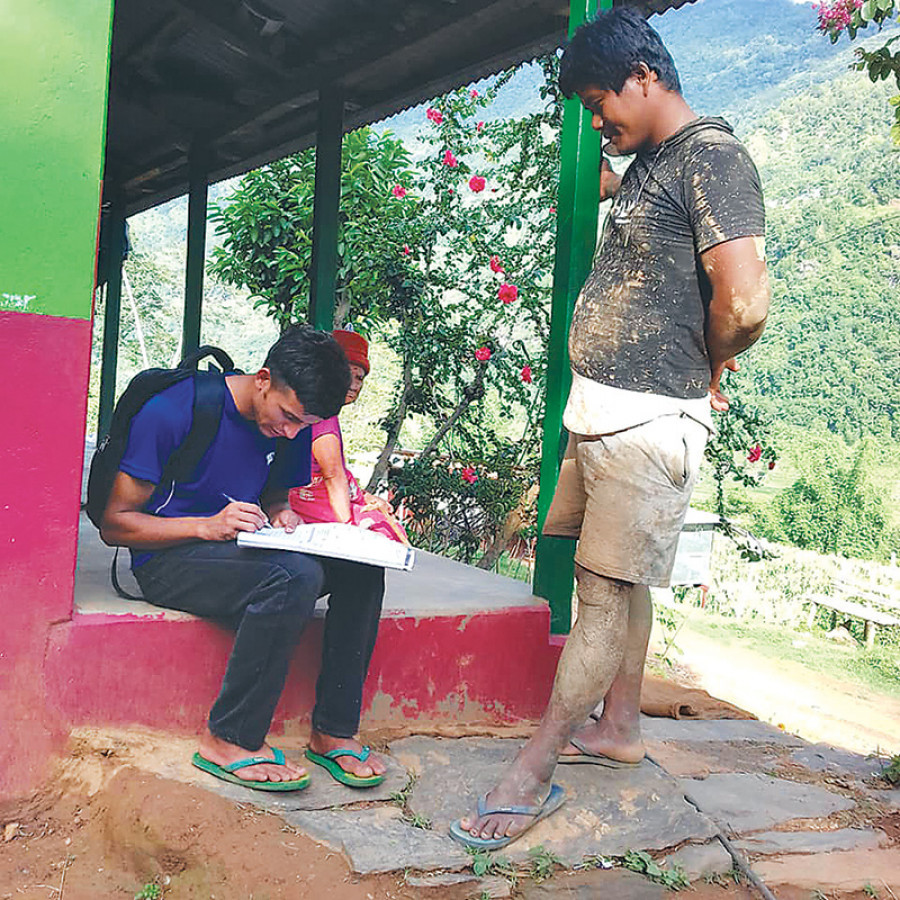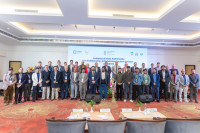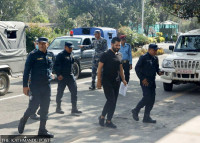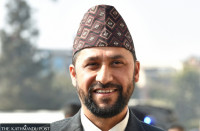National
Covid-19 pandemic, snap polls cast a shadow of uncertainty over census
Covid-19 pandemic, snap polls cast a shadow of uncertainty over census from July 30 to October 1.
Prithvi Man Shrestha
The decennial 12th national population census, which was earlier postponed to the next fiscal year due to the Covid-19 pandemic, still looks uncertain amid continued threat of the pandemic and planned mid-term parliament elections in November and the local elections, which are likely to be held in the following May.
Officials at the Central Bureau of Statistics, the body responsible for conducting the census every 10 years, say the uncertainties caused by the pandemic and the snap elections have made them concerned about the possibility of taking the census even in the upcoming fiscal year 2021-22.
Nepal last conducted its census in 2011 when the country’s population stood at 26.5 million. Projections suggest the population could have now increased to around 30 million. The bureau said this census would be the most comprehensive ever, with enumerators asking for details from households also about the livestock, household amenities and community infrastructure.
“Although the Covid-19 cases appear to be declining over the past few days, the pandemic still looms large,” Hemraj Regmi, deputy director general at the bureau. “We also want to avoid conducting the census so that the election preparations are not affected because both the census and election work rely on government staff.”
The population census is considered important as it provides comprehensive data on the population, economy and society, which is crucial for devising policies to ensure political representation of various groups in the state organs as well as for making development plans.
President Bidya Devi Bhandari on May 22 dissolved the House of Representatives and announced fresh parliamentary elections for November 12 and 19 as per the recommendation of Prime Minister KP Sharma Oli. The constitutionality of the dissolution of the lower house is being tested at the Supreme Court. As per the constitutional provision, local elections should also be held in the middle of next year as the current local governments complete their five year term.
Given this context, a meeting of the Census Steering Committee was held last week which directed the bureau to recommend the period when the census could be conducted in coordination with the Health Ministry.
“The Health Ministry has told us that it would organize a meeting only after June-end when it hopes the pandemic could normalise,” said Regmi. According to Regmi, the bureau has proposed conducting the census from July 30 to October 1 but the proposal has not been discussed at the Steering Committee. “Whether the consens would be conducted during this period will also depend on how the Covid-19 crisis evolves in the coming months,” said Regmi.
Experts have been warning of a potential third wave. Even the Health Ministry has already told hospitals to arrange at least 20 percent beds for minors aged below 18, terming them vulnerable to the possible third wave as they are not vaccinated.
If the elections are held in November this year and local elections in the middle of next year, the census may be affected, according to officials and experts. Although census were conducted alongside elections in the past too, census experts say that it is better to avoid elections to ensure good data collection for the census. In 1991, the census and the elections were held together.
But, Rudra Suwal, former deputy director general at the bureau said that conducting census alongside the elections should be avoided as far as possible as people may not respond properly as they would do on other occasions.
“Elections are the time when mobility of people remains high and enumerators may not find people at home,” he said.
He, however, said if the gap between the last and the new census is allowed to widen further, this can create difficulty in producing comparative data and complicate the data analysis. “It is better to conduct the census in the same months as in the past,” he said.
Earlier, in 1951, the population census was postponed for a year after democracy was introduced in 1950 following the abolition of the autocratic Rana rule, according to the bureau. At that time, the census was conducted from 1952-1954.
“It is better to update population data as quickly as possible as this helps in policy making,” said Suman Raj Aryal, former director general at the bureau, who now works as principal secretary at Province 1.
Nepal’s constitution has also mentioned the importance of the census data. Article 281 of the constitution states, “The Government of Nepal shall make appraisal and review of the implementation of special rights of the women and Dalit community and impacts thereof, on the basis of human development index, concurrently with a national population census to be held in every ten years."
Similarly, according to Article 84 (2), House of Representatives under the proportional electoral system, representation shall be ensured on the basis of a closed list also from women, Dalit, indigenous peoples, Khas Arya, Madhesi, Tharu, Muslims and backward regions, on the basis of population.
The bureau had to halt all preparatory work for the population census 2021 scheduled for June 8-22 due to a lockdown imposed to control the ongoing second wave of the pandemic that hit the country in April.
Before the latest cabinet decision in early May to halt the preparatory work for the census, the bureau had completed the training for trainers and was providing training to supervisors–the ones who are supposed to oversee the work of enumerators.
The enumerators were supposed to be trained starting June 3 before starting counting of population from June 8. The bureau has already appointed 39,000 enumerators and 8,000 supervisors for the census.
Under the population census, there are two main tasks —listing of households and the main population census. The bureau was planning to send the supervisors to the field starting May 9 for listing the households and they were supposed to visit every household and find how many houses, families and family members there are in each family. The listing task, scheduled to be run until May 28, was also supposed to give a rough estimate of the population.
According to the bureau, the listing also gives a framework about the households involved in farming and it will help the bureau to conduct an agricultural census that the bureau conducts six months after the population census every 10 years.
Now, the task of household listing has been affected and without listing of households, the main census cannot be conducted, according to bureau officials.
The bureau has been conducting a decennial population census since 1911 . However, the first modern population census of Nepal was conducted in 1952-54, which put the population at over 8 million. Census information has been widely used for diverse purposes, but especially in development planning and policymaking.




 20.12°C Kathmandu
20.12°C Kathmandu















